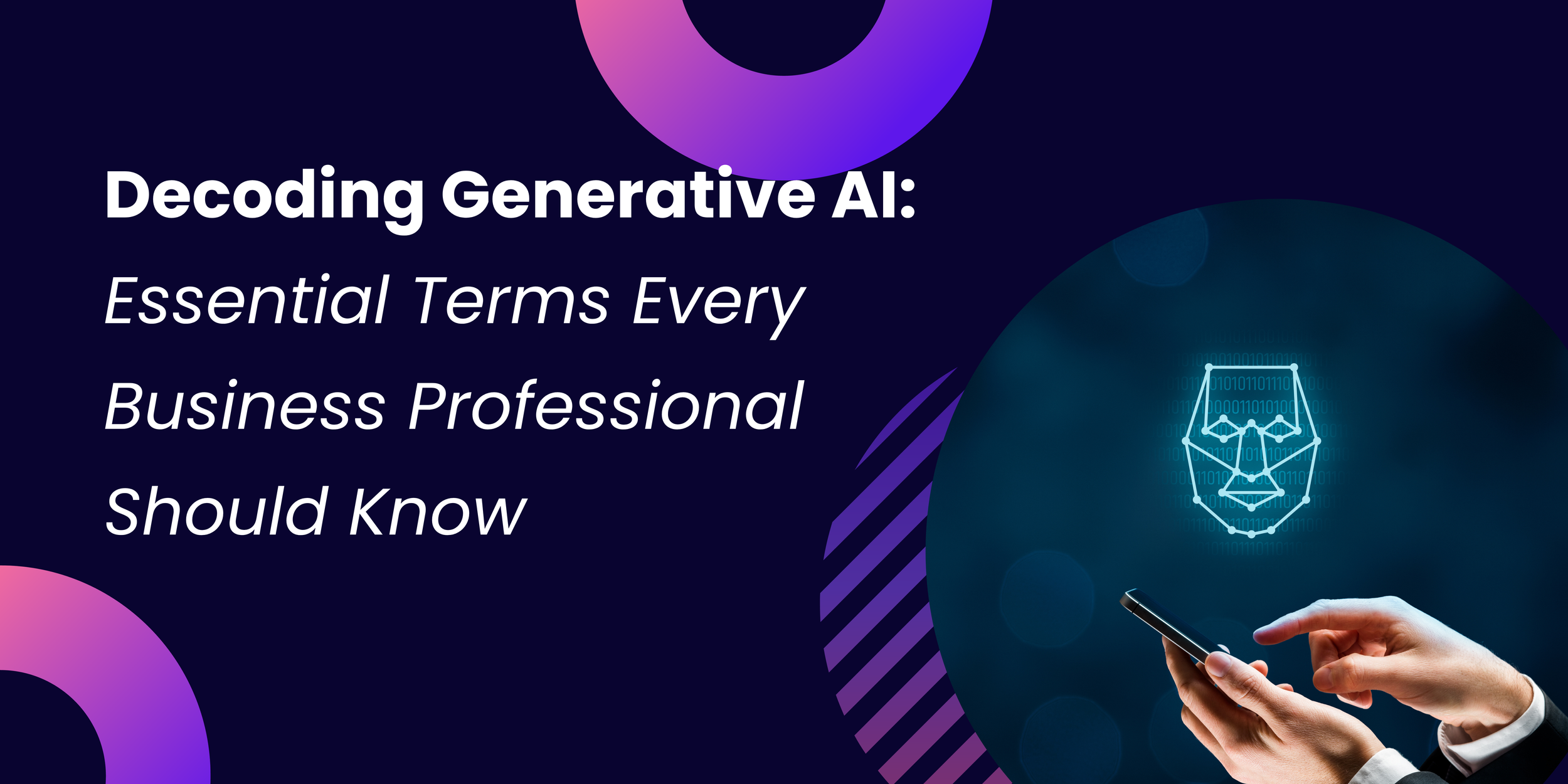Decoding Generative AI: Essential Terms Every Business Professional Should Know
As Generative AI continues to revolutionize industries, understanding its jargon is becoming crucial for business professionals. Let's demystify some key terms in this field to keep you informed and ahead of the curve.
Artificial Intelligence (AI)
The grand umbrella under which all these terms fall. AI refers to machines or software that can perform tasks typically requiring human intelligence, like reasoning, learning, and problem-solving.
Machine Learning (ML)
A subset of AI, this is where machines learn from data without being explicitly programmed. It's like teaching a child through examples rather than strict rules.
Deep Learning
Think of this as an advanced level of machine learning, using neural networks (inspired by the human brain) to analyze patterns in data. It’s machine learning on steroids.
Generative AI
This is where creativity meets AI. Generative AI can generate new content, be it text, images, or music, based on the data it's been trained on. It’s not just about understanding but also about creating.
Neural Networks
Inspired by the human brain, these are a series of algorithms that mimic the operations of a human brain to recognize relationships in a set of data. They are the backbone of deep learning.
Natural Language Processing (NLP)
This technology enables machines to understand and respond to human language, including speech and text. It's the technology behind chatbots and voice-activated assistants.
ChatGPT
A specific example of Generative AI developed by OpenAI, known for its ability to generate human-like text based on the prompts it receives.
Google Bard
Google’s version of a generative AI, focusing on leveraging web data to provide fresh, information-rich content.
Transformers
Not the robots in disguise! In AI, transformers refer to models that handle sequential data, like language, for tasks such as translation and text summarization.
GANs (Generative Adversarial Networks)
These are algorithms used in unsupervised machine learning, involving two networks, one generating data and the other evaluating it. They’re great for creating realistic images and videos.
Conclusion
Understanding these terms is your first step into the world of Generative AI. As this technology continues to evolve, staying informed will be key to leveraging its potential in your business.
Eager to keep up with the latest in AI and how it can benefit your business? Subscribe to our newsletter for easy-to-understand insights and updates. Click here to join a community of forward-thinking professionals!

